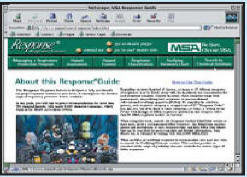| HEAD, EYE AND FACE PROTECTION | [BACK] [NEXT] |
|
Head, Eye, Face and Hearing Protection |
||||
|
Your job is burdened with personal hazards. Within a few minutes on the job site, a falling object can split your head open or a piece of grit can destroy your eye, if you aren’t wearing a protective helmet and eyewear. What may appear to be bearable loud noise can gradually destroy your hearing—if it repeats many times during your work day. It’s smart to outfit yourself automatically before any job begins. Especially if you work in construction, dust and gritty particles can be projected into your eyes. Falling building materials and projectiles can cause serious injuries or even death. Maybe you don’t think your job is that dangerous. But why take chances when a single accident can change your life? What do you need? Protective industrial helmets, or hard hats, are always visible on the job site, particularly where falling hazards exist. Other personal protection can easily be attached to the hard hat to protect the face and ears. Head protection in the U.S. commonly takes the form of protective helmets, Type I (top impact) or Type II (lateral impact) that meet the requirements of ANSI Z89.1-1997. Type I helmets are designed to protect from top impact and penetration, while the Type II helmets give lateral impact and penetration protection. At MSA, customization is our specialty. We can decorate your head protection with any company logo or design or even photographic images. V-Gard® Caps featuring your favorite NFL team or Nascar Racing Team drivers/teams or Freedom Series make you stand out in a crowd while protecting your head. Faceshield frames are designed so that various lightweight plastic and wire-screen faceshields can be quickly snapped into place. MSA’s vented Advance™ Caps have air ventilation slots in the crown and ratchet suspensions for a secure, comfortable fit. Helmets come in all colors and sizes, with different suspension styles. They are easily personalized with customized logo imprinting and available in special designs, such as your favorite NFL team. |
Today’s protective eyewear comes in stylish colors, with wraparound lenses that resist fogging and protect from the sun’s harmful UV rays. Safety glasses are lightweight and have more flexible temples, more comfortable nose bridges, and side shields. Lenses can be yellow, blue, green, or even reflective-mirrored. Up-to-date hearing protection—in the form of electronic ear muffs—can add new dimensions in communication and listening to your favorite music while protecting your hearing. Passive ear muffs can be fastened to the hard hat, and raised or lowered on demand. Disposable ear plugs on cords offer an alternative to helmet-mounted ear muffs, because they provide convenience, comfort, and low cost as well as high noise reduction ratings. What do you want? Workers want personal protective equipment that’s so reliable, comfortable, and easy to work in that they hardly notice they are wearing it. Employers, of course, want reliable protection that employees will wear—at economical prices. To keep employees safe and comply with various government standards, starting with OSHA regulations, employers must be knowledgeable about both the range of potential hazards and the types of safety equipment needed. Fortunately, along with continuous technological improvements in materials and design, every year brings new safety products that are lighter and more comfortable, reliable, and stylish! |
Scope of Z89.1 - 2003 American National Standard for Head Protection The most recent standard was approved in July 2003 and continues to cover requirements for two types of impact-resistant helmets: 1. TYPE I (Top Impact) Helmets intended to reduce the force of an impact to the top of a wearer’s head. 2. TYPE II (Top and Lateral Impact) Helmets intended to reduce the force of an impact resulting from a blow received off-center or to the top of a wearer’s head. The new standard’s performance requirements for Type I and Type II Helmets are equivalent to those specified in the 1998 revision. Electrical Performance 1. CLASS E (Electrical) Helmets intended to reduce the danger of exposure to high-voltage electrical conductors, proof-tested at 20,000 volts. 2. CLASS G (General) Helmets intended to reduce the danger of exposure to low-voltage electrical conductors, proof-tested at 2,200 volts. 3. CLASS C (Conductive) Helmets not intended to provide protection from electrical conductors. The electrical performance requirements in the 2003 standard are identical to those in the 1997 standard.  |
||
|
Fax: (773) 538-8080 |
Telephone: (800) 275-8239 | Website: www.supersafety.com | page 106 |
|---|